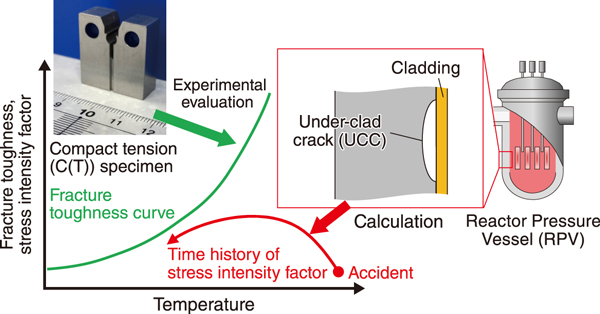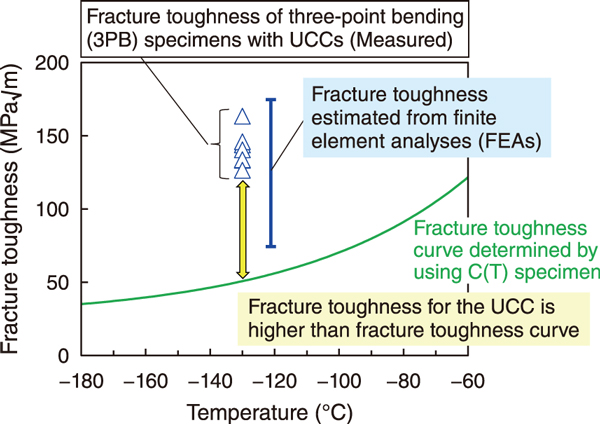
Fig.1 Overview of the structural integrity assessment of a reactor pressure vessel (RPV)

Fig.2 Result of fracture toughness tests for the under-clad crack (UCC)

Fig.3 Stress evaluation near the crack tip by finite element analyses (FEAs)
The reactor pressure vessel (RPV) is the most important safety-related component of light water reactors. Thus, the RPV should be strong enough to prevent fractures even if an accident, such as the loss of coolant, occurs during operation. As shown in Fig.1, the structural integrity assessment of the RPV is performed to confirm whether the fracture toughness of the material is higher than the driving force of the fracture (stress intensity factor) caused by the rapid cooling of the RPV because of the injection of water by the emergency core-cooling system. In general, the fracture toughness is experimentally evaluated by using compact tension (C(T)) specimens (upper left photograph in Fig.1), while the stress intensity factor is calculated by postulating the crack to be located near the inner surface of the RPV.
On the inner surface of the RPV, stainless-steel overlay cladding is applied to prevent corrosion. In the calculation of the stress intensity factor, it is assumed that a postulated crack exists under the cladding (an under-clad crack, UCC). Here, the mouth of the UCC is closed by the cladding (right image in Fig.1). This crack shape is markedly different from that of the C(T) specimen. To improve the accuracy of the structural integrity assessment method, it is important to understand the effect of the differences in crack shapes on the fracture behavior of the component.
In this study, we performed fracture toughness tests using three-point bending (3PB) specimens containing UCCs to investigate the effect of cladding by comparing the results with the fracture toughness curve determined using C(T) specimens. As shown in Fig.2, we experimentally clarified that the fracture toughness of the 3PB specimen is higher than that of the C(T) specimen. This result indicates that the fracture toughness evaluated using the C(T) specimen in the current structural integrity assessment has a safety margin for the postulated UCC.
Moreover, we investigated the cause of high fracture toughness against the UCC using finite element analyses (FEAs). Fig.3 shows the distributions of stress perpendicular to the crack plane near the crack tip in the C(T) and 3PB specimens. It is seen that the UCC was less likely to fail than the crack in the C(T) specimen because the high-stress region for the UCC was narrower than that in the C(T) specimen. Furthermore, the fracture toughness of the 3PB specimen was successfully estimated by using the analytically obtained stress distribution (Fig.2). This analytical estimation method for fracture toughness is expected to be applicable to large structures such as the RPV.
Besides cladding, other factors, such as differences in the loading conditions and component size, may affect the fracture behavior. In the future, we will investigate the effects of the other factors using a combination of experiments and analyses.
A part of this work was performed under the contract research entrusted by the Secretariat of Nuclear Regulation Authority, Japan.
(Masaki Shimodaira)